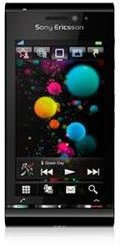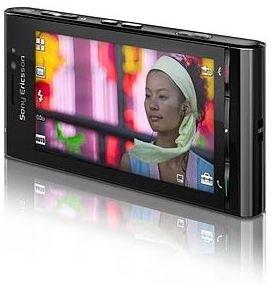Sony Ericsson Satio Review

The Satio is not the first phone to come out with a 12 megapixel camera, however, it is the first one that bundles the high resolution in a smartphone. The phone has a number of features that made it Sony’s flagship phone when it was released. We go into more detail on all the features in this Sony Ericsson Satio review. It is undoubtedly dated now and runs on the old Symbian platform but despite the flood of awesome Android smartphones that overshadow this device it still has that powerful camera as a USP.
Design (4 out of 5)
The Sony Ericsson Satio is a slender phone, with a resistive touchscreen on the front and a 12 megapixel camera on the back. It would be an immensely sleek phone if it was not for the necessary, but cumbersome, camera cover on the back. The sides are unmarred by too many ports and buttons, you’ll find the usual suspects, unfortunately including a proprietary headphone jack rather than the 3.5mm audio jack they really should have included.
The phone dimensions are 4.4 x 2.2 x 0.5 inches so it is quite big. Weighing in at 126g, the Satio is certainly not the lightest phone available either. However, taking into account the rather large 3.5 inch touchscreen, the weight becomes a secondary consideration. The resolution of the screen is 360 x 640 pixels, with support for 16 million colours, which is adequate support for such a powerful camera.
User Interface (5 out of 5)
The menu on the Sony Ericsson Satio uses a tabbed interface, which is quite in vogue at the moment. There are five tabs which essentially allow the user to create five separate home screens for navigation.
Since the underlying operating system is Symbian, the main menu should come as no surprise. By default, it presents the icons in a grid layout, which can be altered to the more traditional list view.
The touchscreen interface has smooth transitions, with pleasing animations. Navigating from screen to screen is not spoilt by choppy visuals, or lag.
Because the phone is a touchscreen device, there are multiple methods of input, four to be exact. First, there is the handwriting recognition option, which involves writing within a small window; then there is a full QWERTY keyboard, aligned in landscape; the third is a miniature QWERTY keyboard, for typing in portrait mode; and the last is an alphanumeric keypad, standard to most similar devices. The range of input options will make the Satio attractive to many kinds of users.
Features (4 out of 5)

The camera is the real USP of the Sony Ericsson Satio, and definitely its most amazing feature. The resolution is 12 megapixels, which is truly excellent for a mobile device. The camera has a Xenon flash, thankfully replacing the usual LED one. The flash doesn’t have the power that one would expect, but it still is a step forward. In addition to the lens and the flash, the camera apparatus includes a small embedded light that can be used to focus on objects. Additionally, while using the camera application, a user can make use of the touch focus feature. This feature simplifies the process of photography, when the user taps on the object they want to focus on, and the phone centres the image on that object. The Satio also has other photo features, like geotagging and panorama mode.
The multimedia features of the phone are rather ordinary; the music player is standard and therefore disappointing. The video player has a few more functions, making it less of let down. Although the phone is a Sony, the audio leaves a lot to be desired, with weak sound output.
The file manager is classic Symbian, with all the imaginable options for organization. There isn’t much room for improvement in this area, since Symbian has one of the best file managers for mobile phone devices.
In terms of connectivity, the Satio has all the conceivable technology packed into it, including quad-band GSM and EDGE, Bluetooth connectivity, Wi-Fi compatibility, GPS and 3G network support. The phone has a fairly good phone browser with inbuilt Flash capability, which makes a nice change from other devices.
Performance (5 out of 5)
The Satio excels in the performance department, as the features seem to have very little impact on the 256MB RAM. The phone transitions with ease from one screen to another, without any lag whatsoever. The performance is also evident while viewing multimedia, as sound and video play seamlessly.
The Verdict (4 out of 5)
The Satio was meant to revive Sony Ericsson at a time when it was flagging. It is a truly admirable smartphone, with some great features – not the least of which is a powerful phone camera. Putting the camera aside for a while, the phone is a little better than average for its time. It does have a wide range of features, and the touch screen sensitivity is good, but it falls slightly short in unexpected areas. However, when the whole package is considered, the good far outweighs the bad.
References
Sony Ericsson, https://www.sonyericsson.com/cws/corporate/products/phoneportfolio/specification/satio